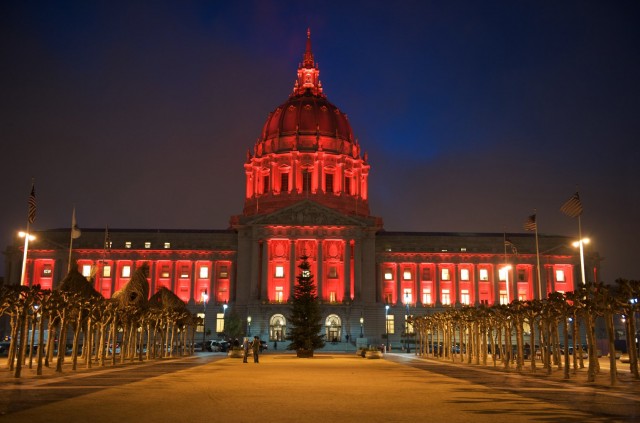So the science of the AIDS “story” stared me in the face –- and scared me.
Little could I anticipate that within a very few years of that news conference my coverage of the story would be the centerpiece of KPIX’s “AIDS Lifeline,” a community service project that won the country’s first national Emmy ever awarded to a local station, The Presidential Citation for Private-Sector Initiatives, and The Peabody Award, broadcasting’s highest honor.
The premise of “AIDS Lifeline” was simple. A television station in a community where there was a public health crisis had the tools to impact that crisis –- with clear information. Separating fact from fiction. Helping people understand what to be afraid of, and, what not to be afraid of. Producer Nancy Saslow and Managing Editor Kim Montour were champions of the project.
I overcame my fear of science. I asked the stupid questions. Learned the language of scientists, about scientific method, what constituted a good study -- and which theories didn’t warrant coverage. Also during that time, I went from being an advocate for the story to becoming an advocate for the issue.
“AIDS Lifeline” was a unique partnership between KPIX, the San Francisco AIDS Foundation, and the Department of Public Health. I believed that we could still do our jobs as journalists, and our company could be good corporate citizens, helping our community respond to this public health threat.
Our coverage put me in the company of the top people in the world who were grappling with this disease. One of them was Dr. Jonathan Mann, a brilliant epidemiologist for the Centers for Disease Control. One day, while I was covering a scientific conference in Washington, D.C., Dr. Mann told me that he was being assigned to work for the United Nations, to head up the Global Programme on AIDS for the World Health Organization (WHO). Before I could finish congratulating him he said, “I want you to come with me, be the Public Information Officer” for the group. My jaw dropped. All I could think was –- "Wow, the stupidest high school biology student in the history of public education…"
Weeks later, I was in Geneva working for the UN. One of the most important assignments for me and Tom Netter, my colleague in the Public Information Office, was to make sure we knew whenever anyone working for the UN said anything about AIDS. The reason? The politics of AIDS were electric, and even the slightest misstep or misstatement would lead to a bevvy of reporters calling our office –- and Dr. Mann –- for comment.
In August of 1987, Tom was reading aloud a speech given by Dr. Halfdan Mahler, the Director-General of WHO. Buried in it was an oblique reference for the need to mobilize countries in the global fight against AIDS. Before Tom finished I interrupted, “Yeah, we need a day. Like 'Cold-Turkey' in the states where people quit smoking for a day.” Tom got up out of his chair. “Yes,” I said, as he walked over to the white board and started writing, “you know, something like Global or World AIDS Day.”
Ideas went up on the white board fast and furious. We chose December 1st because we knew it was a dead spot in the news calendar, so editors would be looking for stories. We would create “Action Kits” for AIDS support groups and tell them how to put on events that would draw media coverage. We would send press kits to media outlets telling them to look out for the kinds of events we were suggesting to the AIDS support groups. We would get them to begin a conversation. We would get the media and these groups to see how they could work together. Just as we did with “AIDS Lifeline” in San Francisco.
Now, 25 years later, that conversation continues.
